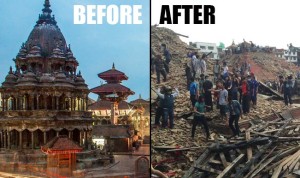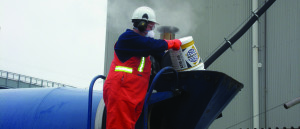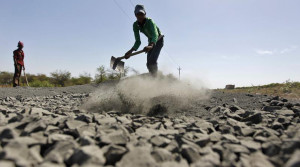Testing the Magnitude of Strong Buildings
14th Apr 2016 Concrete Industry NewsMother Nature strikes again!
Delhi and parts of Northern India were once again shaken on Sunday from the shocks of 6.8 magnitude earthquake in the Hindu Kush region. In the last year, the India belt has seen close to a dozen earthquakes, some reaching the alarming magnitude of 7.8. The disaster in Nepal is a vivid memory of how a single natural calamity can change the skyline of a country and affect thousands of lives.
 As the world comes together to help rebuild nations, there has always been a necessity to build structures that can sustain these natural, unavoidable disasters through a strong foundation, new building technologies, and effective resource management. As land gets more expensive (and there’s less of it) and buildings keep growing higher and higher, the world is looking to use construction methodologies that meet the need for safe work and housing spaces.
As the world comes together to help rebuild nations, there has always been a necessity to build structures that can sustain these natural, unavoidable disasters through a strong foundation, new building technologies, and effective resource management. As land gets more expensive (and there’s less of it) and buildings keep growing higher and higher, the world is looking to use construction methodologies that meet the need for safe work and housing spaces.
Government bodies across the globe put high-value on standards and norms that make sure a building can withstand the test of an earthquake. In India, BIS controls these standards and has provided a detailed report as to what norms are to be followed during construction in different seismic areas across the region.*
Strong foundations, especially with structures that have deep basements are essential in constructing strong and durable buildings. That said, durability doesn’t just come from the products used, but the practices used to install those products as well. Considering that in countries such as India, China, Nepal etc. construction is still heavy on manual labour where most of the practices are yet to be mechanized and the construction industry is heavily dependent on unskilled manual labour, this means a higher risk of man-made errors could occur.
 This is why the processes and the products used at every site should be easy to apply in order to drastically reduce the risk of errors in application. For instance, when choosing a concrete waterproofing method, not only do you want it to work as desired, be cost effective, and last the life of the concrete, but also simple to install. Time and time again, installation errors of external membranes, whether it be rips or tears in the material leave a concrete structure at risk. The ingress of water and water borne chemicals into concrete weakens the integrity of a concrete structure, leaving it susceptible to major damages and even collapse during an earthquake.
This is why the processes and the products used at every site should be easy to apply in order to drastically reduce the risk of errors in application. For instance, when choosing a concrete waterproofing method, not only do you want it to work as desired, be cost effective, and last the life of the concrete, but also simple to install. Time and time again, installation errors of external membranes, whether it be rips or tears in the material leave a concrete structure at risk. The ingress of water and water borne chemicals into concrete weakens the integrity of a concrete structure, leaving it susceptible to major damages and even collapse during an earthquake.
As rebuild occurs in areas damaged by earthquakes, reconstruction must take place using products and methodologies that can easily be installed for optimal use. The better the building, the more durable the structure, the best chance it may have to withstand the fury of Mother Nature.









 SMART CONCRETE®
SMART CONCRETE®